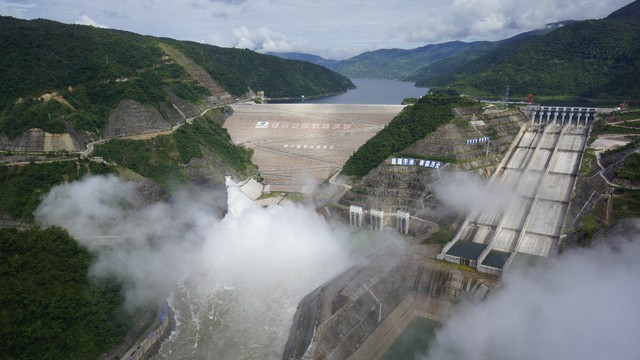The discharge of hydroelectric dams causes the water level of the Mekong River during the dry season to be frequently higher than usual for many years, potentially harming the river’s ecology.
The recent MDM (Monitoring the Operation of Mekong Hydroelectric Dams) project bulletin said: The ecosystem of the Mekong River continues to be harmed due to the consistently high river level from the system’s discharge . dams. In particular, the wetland areas along both sides of the river do not have the time to recede as in the previous dry seasons, so many species cannot reproduce. The affected ecosystem also directly affects the lives of the communities who depend on the river’s resources.
Hydroelectric dams discharge water in the dry season, harming the Mekong River ecosystem
IMAGINECHINA
“Aside from hydroelectric production, higher dry-season flows provide little benefit. They damage the ecosystems of wetland forests and wetlands along rivers, killing eggs,” the report said. migratory birds and reduce the area of land available for riparian production”.
Specifically, during the 2nd week of March, reservoirs across the downstream basin discharged 600 million cubic meters of water last week to produce electricity . During February, dams across the basin released an estimated 4.16 billion cubic meters of water. These cumulative discharges have resulted in a total inflow of water into Stung Treng (Cambodia) of up to 9.21 billion m 3 , 42% higher than the monthly average for the period 1910 – 2007 of 6.48 billion m 3 .
According to the monitoring data of the International Mekong River Commission (MRC), the actual water levels at many measuring stations confirm the same. Especially, the water level in Tan Chau and Chau Doc in the headwaters of Tien and Hau rivers of Vietnam has always been higher than the average in many years since the beginning of the dry season.
In addition to the discharge of hydroelectric dams, the weather conditions in the headwaters of the Mekong River in China are unusually wet, due to the spring thawing earlier than usual. The middle and southern parts of Laos, northern Thailand, western Cambodia and the Mekong Delta are also wetter than usual due to heavy rain.




